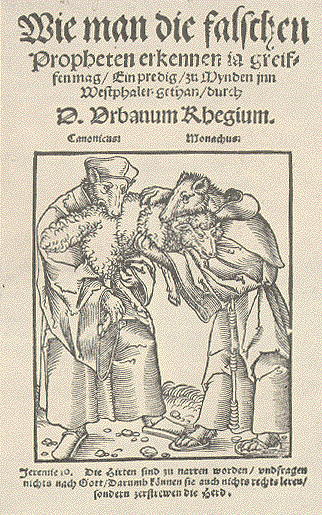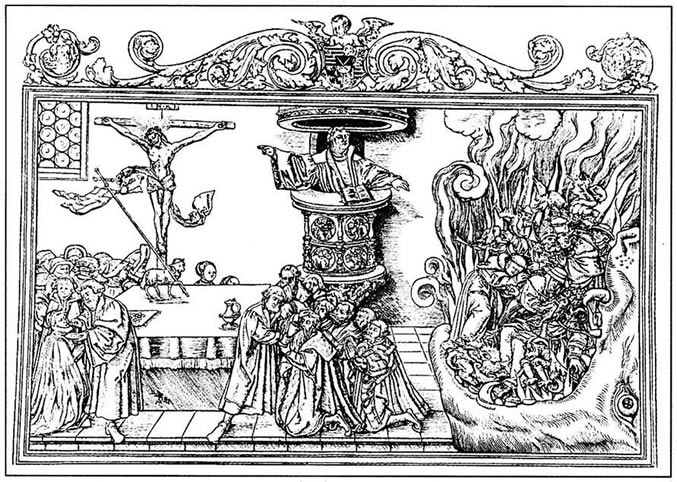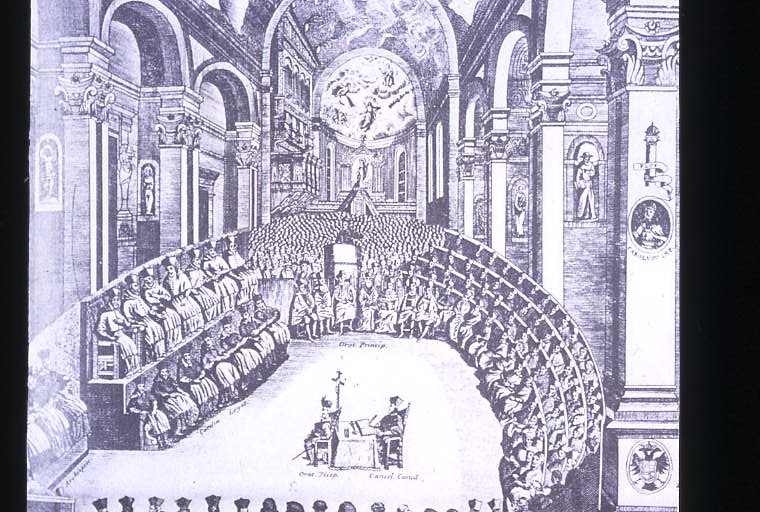13 Renaissance and Reform across Europe
“The Reformation”
Our goals: identify big issues, big changes
- “First wave” led by Protestants
- Centers: HRE, Swiss towns; Luther, Zwingli, others
- ends with Peace of Augsburg, 1556
- Second wave: Jean Calvin
- Goal: reform of “THE CHURCH”–theology, practice, ecclesiastical
- Early attempt: Hadrian VI (1522-23)
Main groups as they developed despite these goals:
- Catholics
- Lutherans: followers of Martin Luther
- Calvinists: followers of John Calvin
- Other city-reform groups (Protestants)
- Radical reformers: ex. Mennonites
anti-papal pamphlets:

Rhegius, Wie man die falschen Propheten erkennen mag. 1539

Catholics and Rome
early reform efforts: slowed by Italian wars
Sack of Rome, 1527
Paul III (1534-49) Alessandro Farnese Palazzo Farnese (begun 1517)
1540 Society of Jesus (Jesuits) Church of the Gesù: Ignatius Loyola
Rome: Gesu (Artstor)
Council called 1542 Trent, met 1545-62 sporadically
- first sessions doctrine
- later: control over standards, reform of abuses
- progress against Protestants
Paul IV (1555-59)
Pius IV (1559-65)
Political advantages to Catholicism: papal treaties; legitimacy

Religious wars: France through 1590s
succession disputes, some parties and claimants Calvinist
Religious Wars II: Thirty Years War (1618-48)
End of religion-based warfare on continent in this era
England
regional control over Church, headed by King
Immedate cause: divorce
doctrine: both Lutheran, Calvinist influences
Mary and return to Catholicism; Elizabeth restored Protestantism
Religious stability: 1688
Rome
re-organization of administration
new prayer books etc implemented
Control of knowledge: Index of Forbidden Books (1559+)
Continued rebuilding of infrastructure (bridges, streets, etc)
Continued centralization of religous orders
Dealing with religious dissent and difference: Ghetto
Relations with Protestant visitors; with “cultural tourism”
